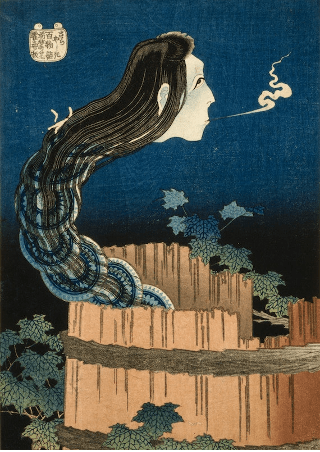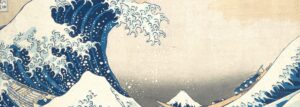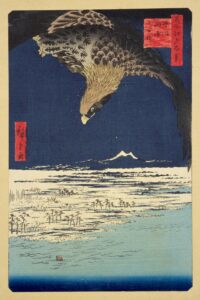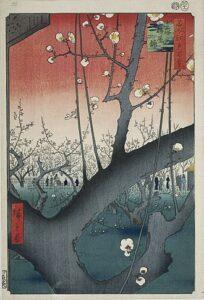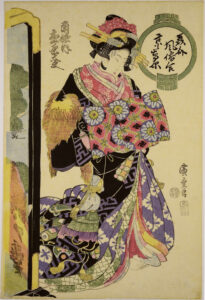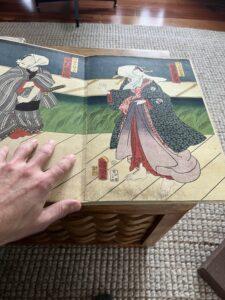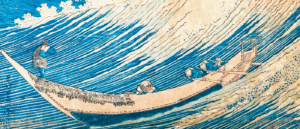Katsushika Hokusai’s style of art is often characterized by his mastery of traditional Japanese ukiyo-e woodblock printing techniques, which he used to create a wide range of works including landscapes, portraits, and depictions of everyday life in Edo-period Japan.
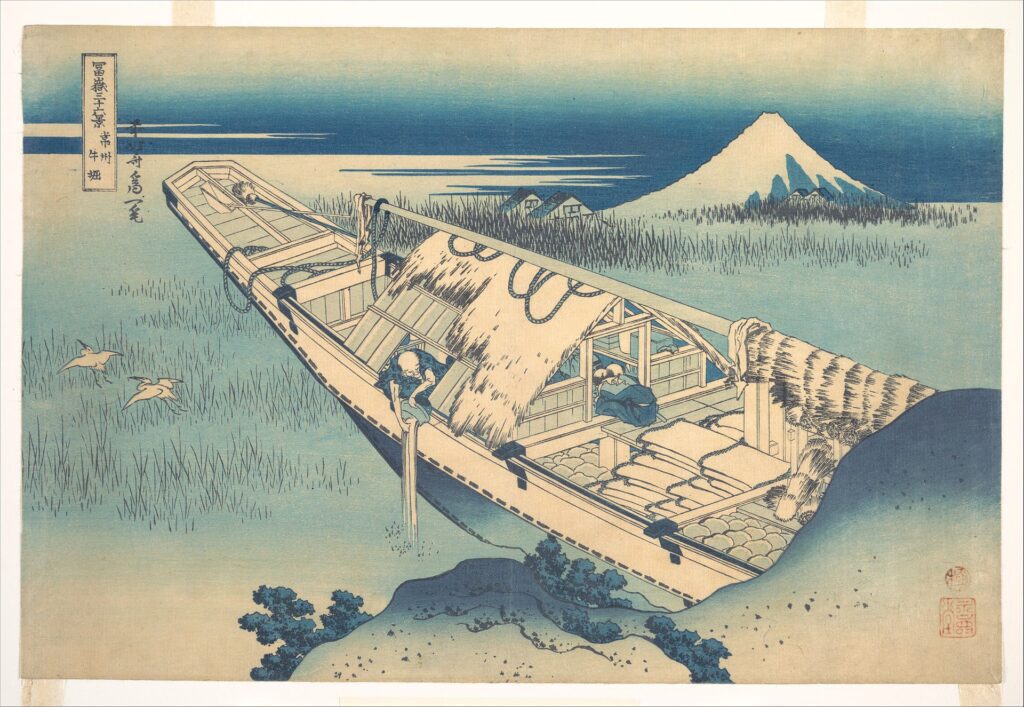
Hokusai’s style is known for its attention to detail and its use of vivid colors and strong lines. He often used bold, sweeping lines to depict movement and create a sense of energy in his works. He was also skilled in the use of perspective and often incorporated unusual vantage points, such as looking up at a mountain or down at a river, to create a sense of depth and space in his compositions.
Hokusai was a prolific artist who worked in a variety of styles throughout his career, but he is perhaps best known for his landscapes and depictions of natural phenomena such as waves and waterfalls. But, Hokusai also had a distinctive way of drawing figures. His figures are often depicted with clear, sharp lines and precise, controlled brushstrokes that emphasize their contours and movement.
One of the hallmarks of Hokusai’s figure painting is his use of color to create contrast and highlight certain features. He often used a limited palette of bright, bold colors that made his figures stand out against the background. He was also skilled in using shading and texture to create a sense of depth and realism in his figures.
Hokusai’s figures are often shown in dynamic poses that convey a sense of energy and movement, whether they are engaged in everyday activities or more dramatic actions such as battling monsters or sailing on stormy seas. His attention to detail and his ability to capture the subtle nuances of posture and expression made his figures come alive and contributed to his reputation as one of the greatest artists of the ukiyo-e tradition.
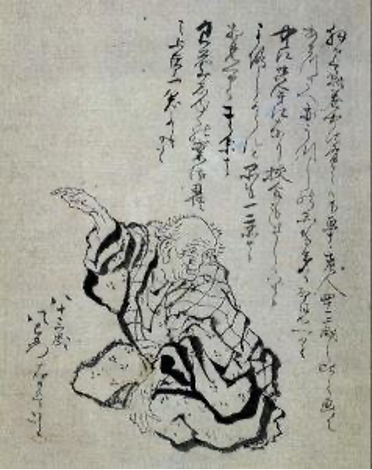
In addition to figures, Hokusai was also a master at drawing animals in a most interesting fashion. Hokusai’s animal drawings were interesting for a number of reasons, including his attention to detail, his ability to capture the unique characteristics of different animals, and his use of animals to convey broader themes and ideas.
One of the most striking aspects of Hokusai’s animal drawings is his attention to detail. He was skilled at capturing the textures, patterns, and movements of different animals, from the sleek, sinuous lines of a swimming fish to the shaggy, rough fur of a bear. His drawings often feature intricate, delicate line-work that creates a sense of depth and movement, and his use of color is both bold and precise.

Hokusai also used animals in his drawings to convey broader themes and ideas. For example, he often depicted birds and other animals in naturalistic settings, using them to explore the relationship between humans and nature. He also used animals to convey symbolic meanings, such as the dragon, which represented power and prosperity in traditional Japanese culture.
In Conclusion, Hokusai’s works are characterized by their delicacy, precision, and elegance, and they continue to be admired and studied by artists and art lovers around the world. Please browse our site for original Hokusai woodblock prints for sale, and also the Hokusai archives – which have compiled an exhaustive, archived collection of all Hokusai works with high resolution imagery.
You can also upload your woodblock print and do a reverse image search to determine the name of your print. Check out our new tool here.

